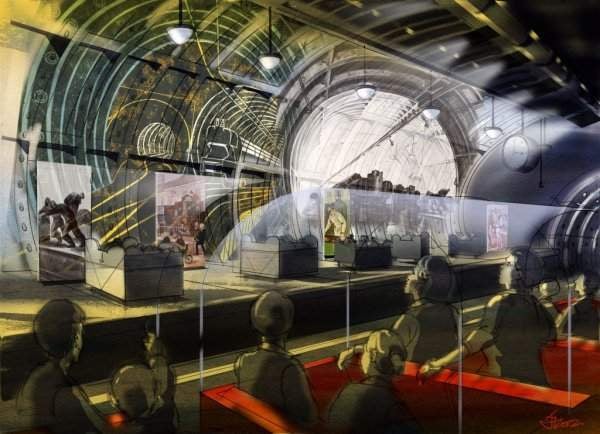
The march of time cares little for signal failures. Alex Matchett reports from the Mail Rail groundbreaking ceremony
London’s aged infrastructure may be just a generation away from being its next major tourist attraction. ‘It might be the entire tube system is mothballed and made into a museum,’ says historian Dan Snow at the groundbreaking ceremony for the heritage renovation of the Royal Mail’s ‘Mail Rail’. ‘You could not make a prediction that I think would be too outlandish.’
Just thirteen years ago Mail Rail, linking Paddington and Whitechapel, was fully operational. Now it is about to become the centre piece of the new Postal Museum. ‘I suspect we are going to see unimaginable and revolutionary changes,’ says Snow standing in Mail Rail’s derelict maintenance yard four floors below the Mount Pleasant sorting office.
Mail Rail was superseded. As might we be, says Snow: ‘Some of the predictions are that between a third and half of current jobs won’t exist in 30 years’ time.’ Technology looks set to marginalise the need for proximity, emphasising an infrastructure of information over one of mass transport. And when we do need to travel we won’t need human interaction. Snow suggests every single bus depot and every single taxi depot could become a heritage site because of driverless vehicles, painting a picture of the school children of 2050 touring London’s underground carparks: ‘“This is where people used to come and park their cars. Weirdly the cars didn’t just wander off and find someone else to take around, they used to sit there, idle for hours and hours, sometimes even weeks or months on end! A totally useless asset was depreciating that people didn’t get any use out of!”’
It seems comical, but given our own fascination with our ancestors’ ruts entirely plausible, especially given the rate of change. Snow draws parallels between the industrial revolution, when a factory worker commuting by steam train would look with bemusement on the farm labourers of the previous generation, and our own age of flux. ‘In one form of communication, the internet, we are galloping ahead – we’re either living through the fourth industrial revolution or we’re still in the first.’
That narrative is one the Postal Museum hopes to provide given its unique perspective on what was the world’s first information superhighway. ‘With 500 years of stories here they’ll always be able to tie it in to something that’s happening,’ says Head of the Heritage Lottery Fund , Stuart Hobley. ‘One of the things they’ll be doing is capturing that industrial heritage right up to what the guys [postal workers] were doing recently.’ For visitors that will be literally as they can ride the Mail Rail through an interactive experience housed in the small gauge tunnels.
And where else could be next be receiving such a heritage treatment… ‘Savile Row?’ muses Hobley.







